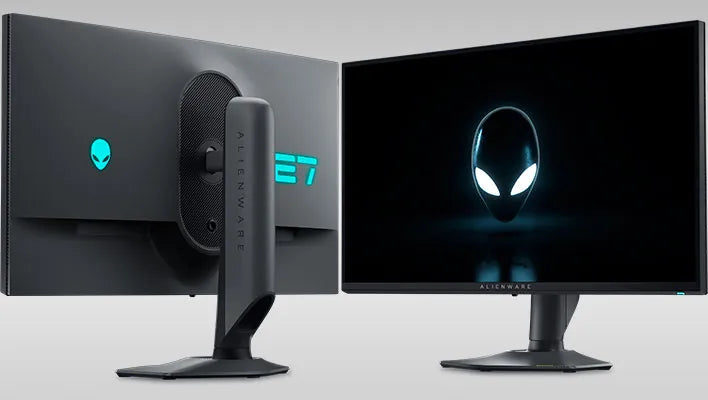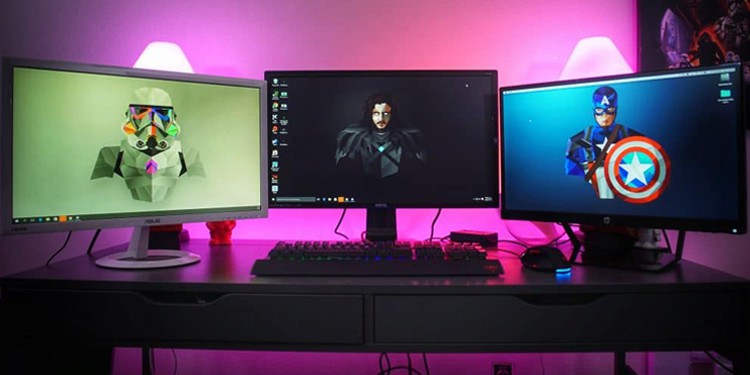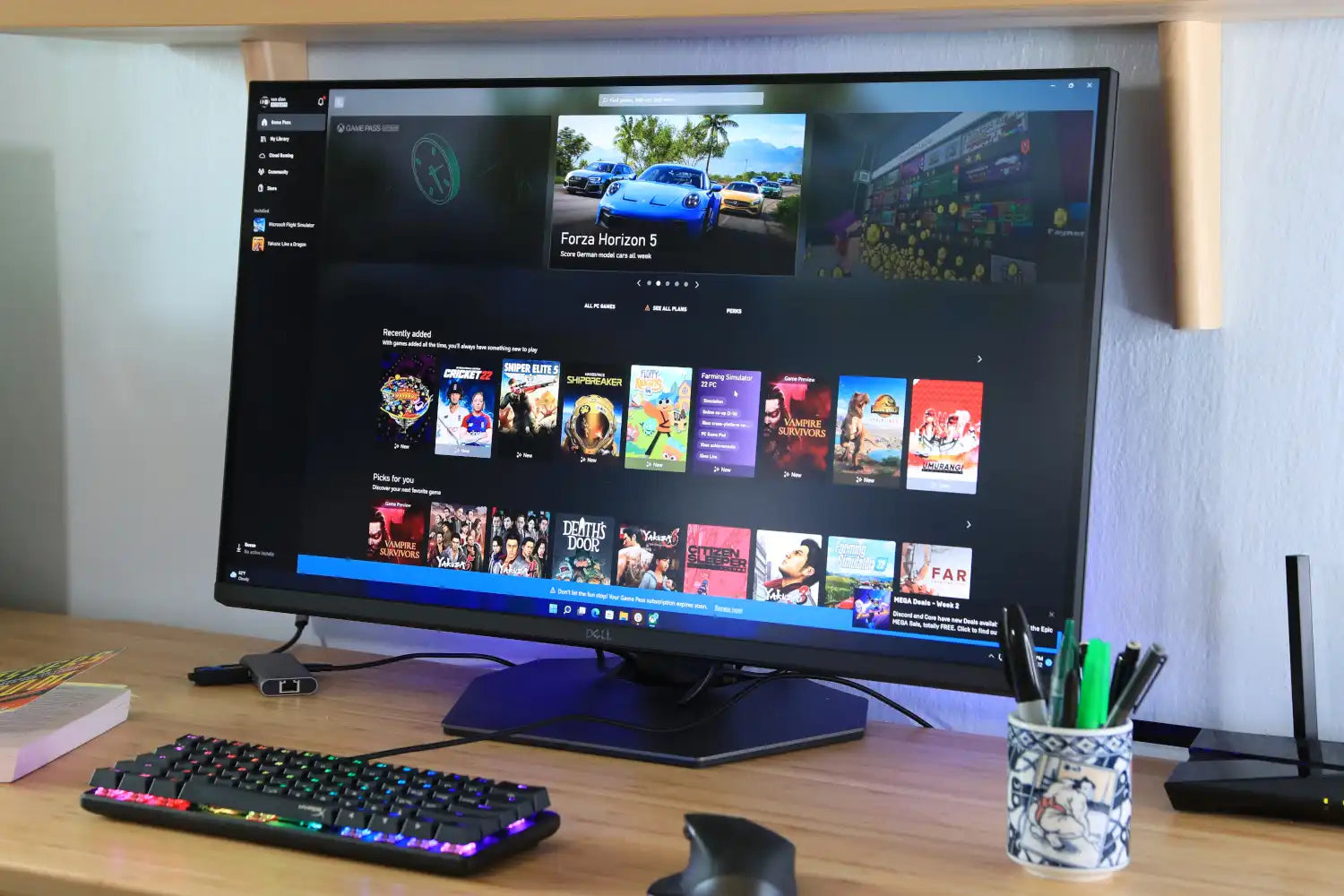An IPS monitor typically lasts between 30,000 to 60,000 hours of use, which translates to over 10 years with average daily usage, though this lifespan can be influenced by factors like brightness settings and environmental conditions.
Defining IPS Monitor Lifespan
The industry standard benchmark for lifespan is the time it takes for the monitor's brightness to degrade to 50% of its original output.
For most modern IPS panels, the typical lifespan falls within a range of 30,000 to 60,000 hours.
| Usage Scenario | Daily Usage (Hours) | Estimated Lifespan (Years) |
|---|---|---|
| Standard Office Work | 8 hours/day | 10+ years |
| Heavy Professional/Gaming | 12 hours/day | ~7-8 years |
| 24/7 Operation (Digital Signage) | 24 hours/day | ~3.5 years |
- A panel with a 60,000-hour rating will simply be about half as bright after that much use.
- This means that while a model is rated for, say, 50,000 hours, some units may fail earlier due to manufacturing variances, while others will last significantly longer.
The probability of a major failure (like a complete backlight outage) well before this half-life point is relatively low, often below 5-10% for models from reputable manufacturers, assuming normal usage conditions within the specified environmental parameters (e.g., operating temperature of 0-40°C). The decay rate isn't linear either; the brightness loss is often more gradual in the initial 10,000 hours and may accelerate slightly as the components age, but this is factored into the manufacturer's calculated rating.
Key Factors Influencing Longevity
Running your panel at 100% brightness all the time puts maximum stress and thermal load on the LED backlight array, accelerating the decay rate of the phosphors. Dropping that level down to a comfortable 60-70% for typical office or home use can reduce the energy load by nearly 40% and potentially extend the functional lifespan of the backlight by thousands of hours. The relationship isn't perfectly linear, but a good rule of thumb is that every 15-20% reduction in brightness setting can yield a significant decrease in the rate of lumen depreciation.
Operating a monitor in a room that's consistently above 30°C (86°F) can potentially slash its expected lifespan by 20-25% compared to running it in a cooler, climate-controlled space around 20-22°C (68-72°F). Ensure there's at least 5-10 cm of clear space around the ventilation slots to allow for proper airflow and heat dissipation.
- Usage Patterns: A monitor that runs for a solid 8 hours a day and is then powered off undergoes less thermal cycling (heating up and cooling down) than one that is turned on and off multiple times throughout the day.However, enabling sleep mode after a 15-minute period of inactivity is highly recommended over running a static image for hours, which can lead to image retention.
- Panel Quality and Manufacturing Variance:There's always a statistical distribution; even within the same model, some units might last 70,000 hours while a small percentage might fail before reaching 20,000 hours. This is why warranties exist, typically covering you for 2-3 years against such early failures.
Recognizing End-of-Life Signs
The primary indicator is luminance decay below 50% of original output, typically occurring after 30,000+ operating hours. This manifests as requiring 100% brightness setting to achieve what previously required 60-70%, with measurable color temperature shifts exceeding 1000K towards yellow spectra.
Backlight uniformity loss creates visible brightness variance exceeding 15% across the panel surface, with corner dimming being most prevalent. Color gamut coverage may shrink from original 98% sRGB to below 80%, particularly noticeable in blue and red saturation loss. Delta-E color accuracy values typically exceed 5.0 (visibly inaccurate) compared to original <2.0 factory calibration.
Pixel failure rates increase exponentially after 20,000 hours, with cluster failures (≥5 adjacent pixels) indicating panel degradation. Power supply aging produces audible coil whine at frequencies between 1-5 kHz under 80-100% brightness load. Input lag may increase by 5-8 ms due to deteriorating signal processing components.
The economic threshold for repair versus replacement typically occurs when repair costs exceed 30% of new equivalent model pricing, usually coinciding with 4-5 years of intensive use.
Maximizing Your Monitor's Years
Running your display at 100% brightness continuously puts maximum stress on LED backlights, accelerating their decay rate. Dropping to 60-70% brightness for daily use can reduce power consumption by 30-40% and potentially extend backlight lifespan by 10,000+ hours. For office work in typical 300-500 lux environments, 120-150 nits (approximately 50-60% on most monitors) provides optimal comfort and longevity.
For every 10°C (18°F) reduction in operating temperature, semiconductor lifespan potentially doubles. Maintain 5-10 cm clearance around ventilation ports and clean dust filters every 3 months. Ambient temperatures should ideally remain between 20-25°C (68-77°F) - environments consistently above 30°C (86°F) can reduce component lifespan by 20-25%.
| Practice | Implementation | Expected Benefit |
|---|---|---|
| Brightness Control | Set to 60-70% for daily use | Extends backlight life by 30-40% |
| Sleep Timer | Activate after 15 minutes inactivity | Reduces annual usage hours by 20-25% |
| Pixel Shifting | Enable in OSD menu | Prevents static image retention |
| Regular Cleaning | Dust vents every 90 days | Maintains 95%+ cooling efficiency |
| Power Management | Use surge protector with 1000+ joule rating | Prevents 80%+ of electrical damage |
Enable automatic sleep mode after 15 minutes of inactivity - this simple change can reduce annual operational hours by 20-25% for typical users. Utilize pixel shifting and screen refresh functions found in most monitor OSD menus to prevent static image retention. For environments with high ambient light consider using bias lighting behind the monitor rather than increasing screen brightness - a 6500K bias light at 120 lumens can reduce perceived contrast needs while maintaining comfortable viewing.
A quality surge protector with 1000+ joule rating and 0.5 nanosecond response time prevents approximately 80% of power-related failures. For areas with unstable power, consider UPS systems that maintain consistent 120V ±5% output. Finally, perform periodic calibration every 6-12 months using hardware calibrators to maintain color accuracy within Delta-E <2.0 - proper calibration ensures you're not unnecessarily increasing brightness to compensate for perceived color shifts.
Comparing IPS to Other Panels
Most modern IPS panels are rated for 30,000 to 60,000 hours to 50% brightness, which generally exceeds OLED's typical 15,000-hour rating but falls short of high-quality VA panels that can reach 70,000+ hours in some cases.
TN panels, while often rated for similar 50,000-hour lifespans as IPS, frequently experience more rapid color shifting and backlight deterioration after approximately 20,000 hours of use. VA panels maintain better black level consistency over time but commonly develop noticeable smearing artifacts after 30,000+ hours of operation.
- Brightness Decay Rates: IPS panels typically show 10-15% brightness reduction after 10,000 hours of use at 200 nits output, compared to VA's 8-12% and TN's 12-18% degradation under identical conditions. OLED displays can experience up to 25% brightness reduction in high-use areas during the same period.
- Color Accuracy Maintenance: After 20,000 hours, IPS panels generally maintain ΔE < 3.0 color accuracy for 90% of units, outperforming TN panels which often exceed ΔE > 5.0 and VA panels that typically range ΔE 3.5-4.5. OLED displays show excellent color maintenance but develop permanent image retention in approximately 15% of units after 3 years of typical use.
- Failure Probability: Industry data shows IPS panels have approximately 85% survival rate at 30,000 hours, compared to TN's 80% and VA's 88%. OLED panels show 92% survival at 15,000 hours but drop to 75% at 30,000 hours due to organic material degradation.
IPS panels generate approximately 15-20% more heat than TN panels due to more complex light path designs, but 10-15% less heat than VA panels with their deeper cell structures. This puts IPS in a favorable position for thermal management, with most models operating within 35-45°C range during typical use, compared to VA's 40-50°C and TN's 30-40°C ranges. This thermal profile contributes to IPS's reliable 5-7 year practical lifespan for most users, making it the balanced choice for those prioritizing both image quality and longevity.
Read more

IPS panels are excellent for gaming due to their wide viewing angles (178°) and accurate colors (100% sRGB coverage), though they typically have slightly higher response times (4-5ms) compared to T...

IPS (In-Plane Switching) panels are typically 30–80 more expensive than VA (Vertical Alignment) ones due to their superior viewing angles (178° vs. 170°–178°) and better color accuracy (100% sRGB v...




Leave a comment
This site is protected by hCaptcha and the hCaptcha Privacy Policy and Terms of Service apply.